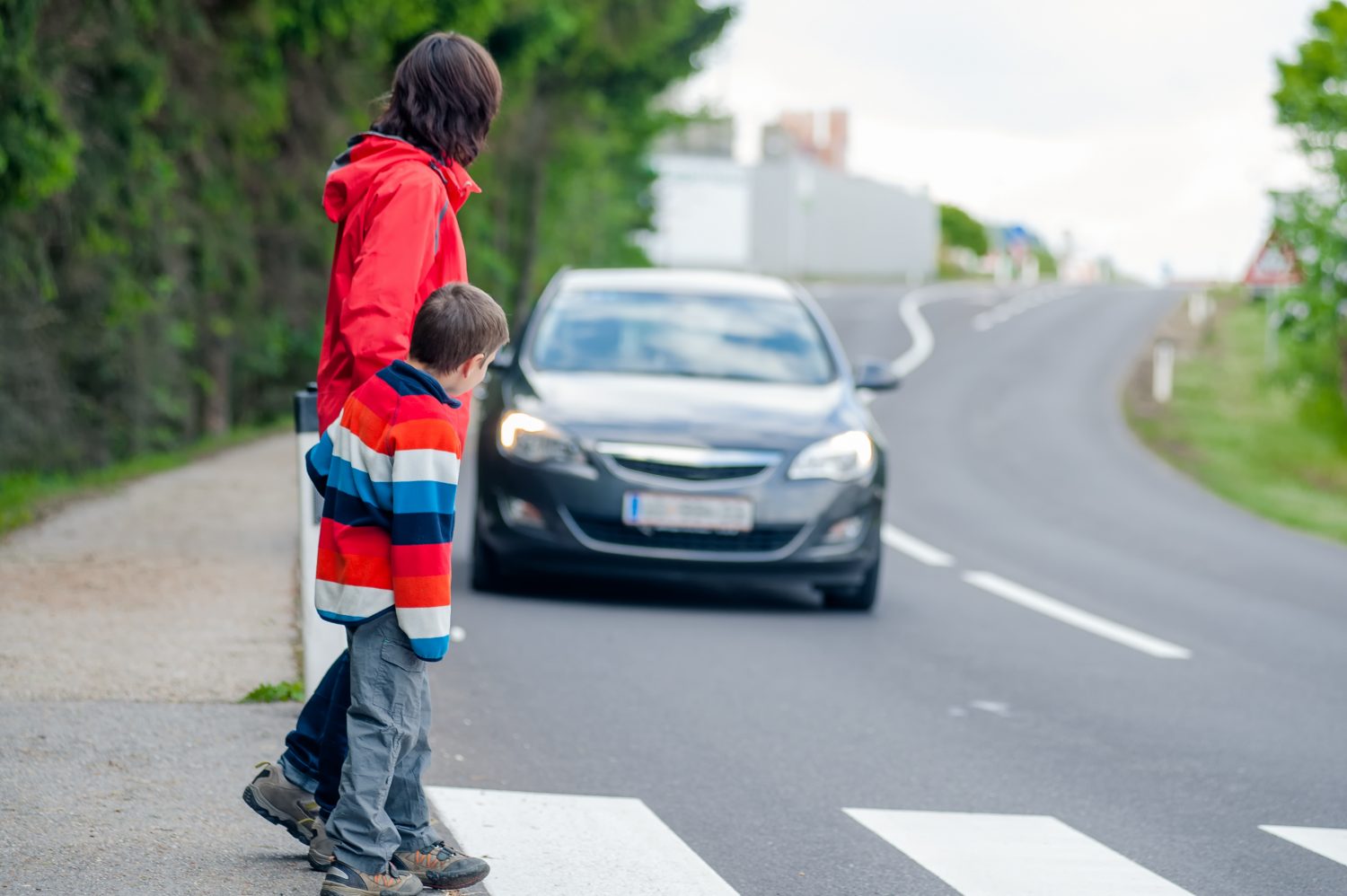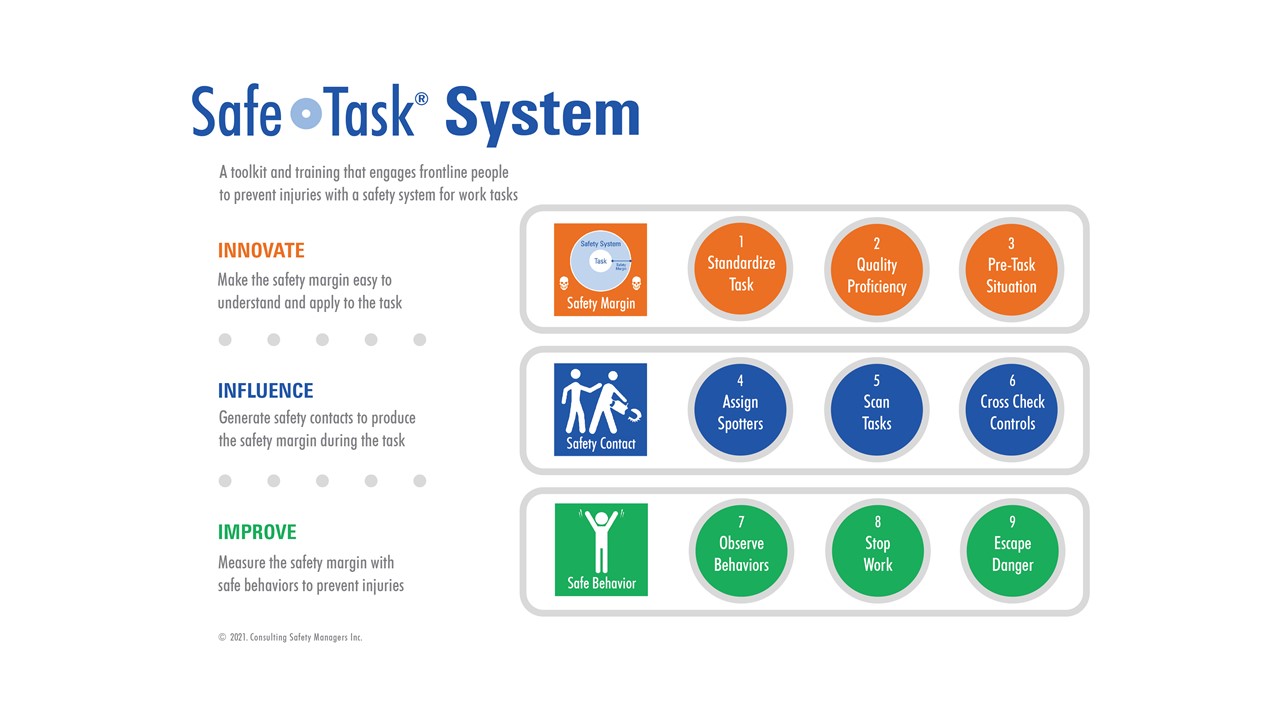Take a minute to understand the concepts behind engaging frontline people in their own safety
A Safety System in Action
An adult and a child are walking on the sidewalk. They approach an intersection with fast-moving vehicles, a common danger zone.
The adult holds the child’s hand, a precaution known as a safe behavior, or an action meant to prevent human error.
Then the adult begins showing the child the safety margin covering how to cross the street safely. The adult reinforces six safe behaviors for a proper safety margin:
- Stop at the curb.
- Look both ways for approaching vehicles.
- Step of the curb only when traffic is clear.
- Stay in the crosswalk for visibility.
- Walk across the street looking both ways.
- Move quickly to other side.
When they approach the next intersection, the adult makes the safety contact again, holding the child’s hand.
But this time, the adult makes another safety contact, directing the child to verbalize and perform the six safe behaviors as they cross the street safely together.
The adult makes a third safety contact once back on the sidewalk, providing valuable feedback about the child’s performance, so the child can apply it next time.
This is a safety system in action. It engaged the adult and child to think about risk and take action to prevent an injury.
SafeTask® System is a safety system for work tasks that engages frontline people to prevent injuries, just like crossing the street.



